
1. Scutellum with a disc or cup on dorsal
surface with a central or posterior pit (a,b,c). Pronotal plate well-developed,
frequently produced antero-dorsally into an anterior plate with a strong postero-lateral
margin (a). Segments 2 and 3 of metasoma fused, without visible suture ...EUCOILINAE

Scutellum without a disc or cup dorsally (A,
B); occasionally with raised central area, but lacking a central or posterior
pit (C). Pronotal plate frequently lacking a strong posterior margin. Segments
two and three rarely fused ...2

2. Apical margin of forewing distinctly
emarginated (a). Dense 'foamy' setae present on propodeum and anterior of
metasoma (b). Scutellar plate occasionally present, but lacking central pit (c)
...EMARGININAE

Apical margin of forewing entire (A). Propodeum and
base of metasoma setose or glabrous, but never with dense, 'foamy' setae
(B, C) ...3

3. Mesoscutum and scutellum completely smooth
and rounded, entirely lacking sculpture (a). Petiole very short, at most as long
as broad (b) ...CHARIPINAE

Mesoscutum and scutellum frequently
sculptured, most often with notauli present on mesoscutum, and the scutellum
crenulate to rugose; if scutellum smooth, then with distinct posterior carina
and petiole long, at least 4X longer than wide ...4
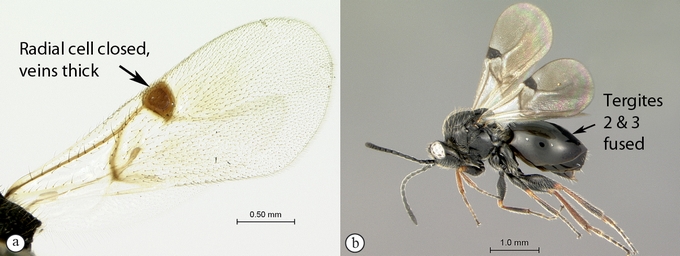
4. Radial cell of forewing strongly reduced,
closed, its veins thick and heavy. Metasoma with segments 2 and 3 forming a
syntergum ...PYCNOSTIGMINAE
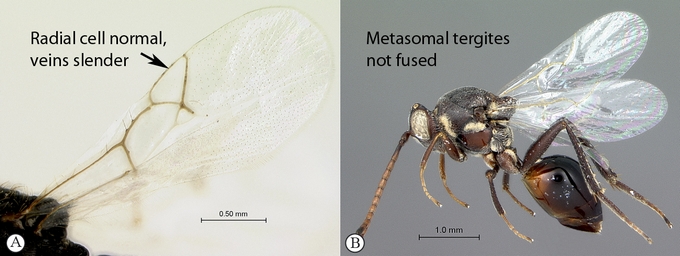
Radial cell of forewing not reduced, open or
closed along anterior margin, veins typically slender (A). Metasomal tergae free
(not fused) (B) ...5
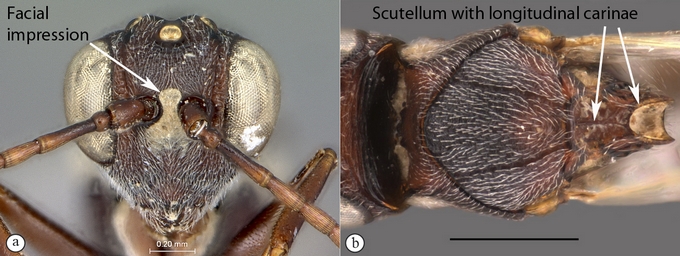
5. Facial impression usually present between
toruli (a). Tergite 2 of metasoma liguliform; hind tibiae in most genera
longitudinally ridged or furrowed on outer margins or posteriorly. Scutellum
with one or more longitudinal carinae and subapically with either a spine or
foveae (b). Mesosoma sculptured, dull (b) ...ASPICERINAE
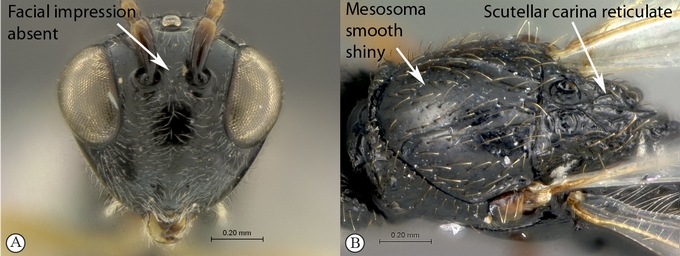
Facial impression absent (A). Tergite 2 of
metasoma not liguliform. Hind tibia not longitudinally ridged or furrowed
externally or posteriorly, at most with longitudinal carinae or groove
internally. Scutellum usually without three longitudinal carinae or subapical
fovea, though more frequently produced apically to form a spine (B). Mesosoma
generally smooth and shining, with notauli present (B), occasionally dull and
sculptured ...6
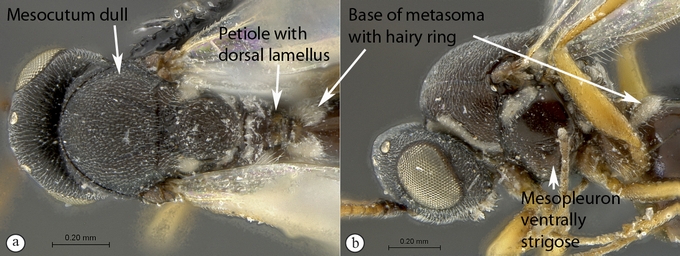
6. Petiole with dorsal lamellus, which
partially covers the junction between the petiole and the nucha (a). Base of
metasoma with a complete hairy ring (a, b). Mesoscutum dull, microcoreacious (a,
b). Mesopleuron dorsally smooth and shiny, ventrally strigose (b) ...
Melanips (ASPICERINAE)
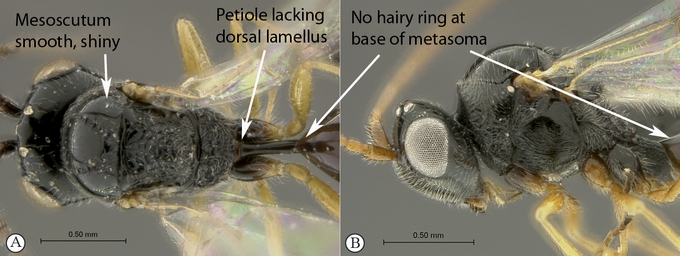
Petiole lacking a dorsal lamellus, junction
between petiole and nucha fully exposed (A). Base of metasoma glabrous, lacking
a hairy ring (A, B). Mesoscutum lacking microcoreacious sculpture;
macrosculptural elements usually present (A). Mesopleuron smooth except for
distinct mesopleural carina or entirely longitudinally striate (B) ...7
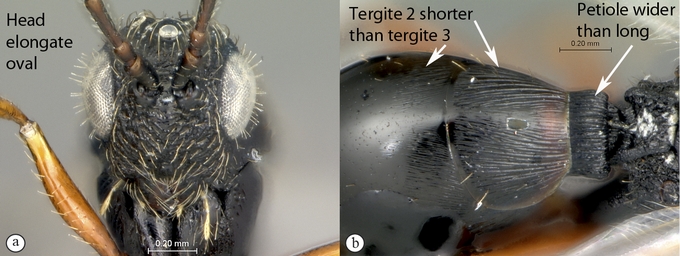
7. Head, in anterior view, elongate oval to
round, as wide as, or narrower than mesosoma (a). Tergite 2 of metasoma shorter
than third; petiole never as long as wide (b) ...FIGITINAE
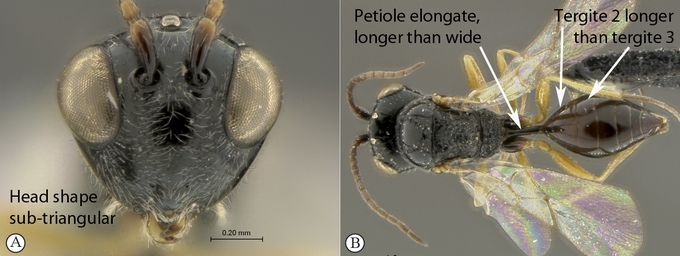
Head, in anterior view, roughly triangular,
occasionally wider than mesosoma (A). Tergite 2 of metasoma longer than third;
petiole at least as long as wide, generally more than twice as long as wide (B)
...ANACHARITlNAE
|